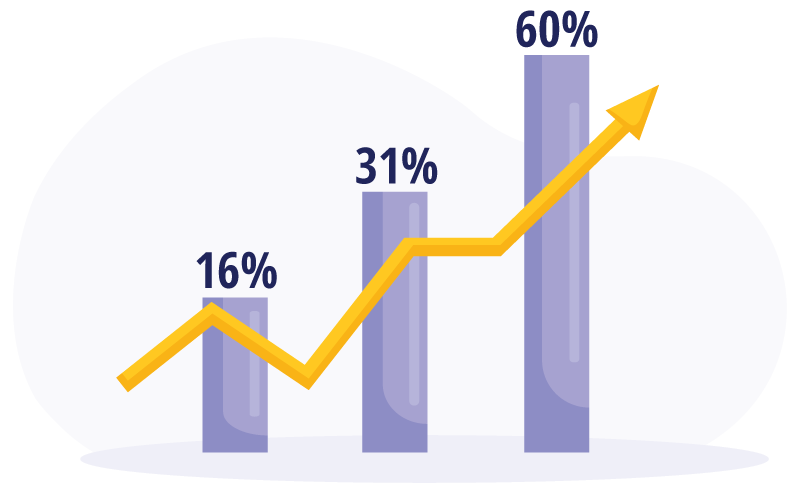Academic Impressions surveyed over 3,000 higher education administrators, faculty, and staff from across the United States to understand how they view professional development and its role in their work.
Explore The Results
Read the Paper
Unveiling the Truth: How Leadership Impacts Trust, Morale, and Retention in Higher Education
by Amit Mrig, President, Academic Impressions
Listen to the Discussion
An Introspective Look at Higher Ed Leadership’s Impact on Trust, Morale, and Retention
FREE Webcast Recording
Delve Into the Seven Key Findings
Finding 1: The Great Resignation is not over for higher education.

57% likely to leave their position in the next year.

42% experiencing clinical symptoms of burnout.
Finding 2: Leadership and professional development matter. A lot.

One finding remains consistent across five studies and 10 years:
- Leadership support for professional development is the single biggest predictor of job satisfaction,
- And job satisfaction is a meaningful predictor of job retention.
In fact, when someone is dissatisfied with their job, they are 67% more likely to leave their position within a year.

Finding 3: The public aren’t the only ones losing trust with higher ed leaders.

1 in 5 people reported low or no trust in their supervisor. This group was much less satisfied with their jobs and was more than twice as likely to say they would be seeking another position within the next year.

When high trust was reported, respondents were nearly twice as likely to say that their organizations were highly effective.

Leadership support for professional development was the highest predictor for trust in our survey. Those who rated high leadership support for professional development were 22% more likely to say they trusted their supervisor.
Finding 4: The best ROI for employee engagement? Leadership development.
Leadership development can come in many forms and for the first time, we surveyed faculty and staff on both the availability of such programs at their institution and their interest in participating. The findings were stark...

85% interest in participating in a leadership development program.

38% reported having an internal program available to them.
The fact that faculty and staff want to pursue leadership development should be an encouraging finding. Those who took part in leadership development were 23% more likely to be satisfied with their jobs and 9% less likely to report significant symptoms of burnout.
Finding 5: It’s time to start investing in coaching.
Those that have received coaching were:

16% more likely to be satisfied with their jobs.
31% more likely to say they can take creative risks in their teams.
60% more likely to report safety in pushing back against their leadership.
Finding 6: Succession planning…works.
In our survey, succession planning was rarely practiced, with fully 86.1% of respondents saying that it was rarely or never done.
It was also the most effective practice reported. Those who had participated in succession planning were:
- 75% more likely to report high job satisfaction.
- 28% less likely to be experiencing significant burnout.
- 24% less likely to say that they planned to leave their job in the next year.

Finding 7: Faculty break the mold.
Compared to non-faculty, faculty respondents scored lower on multiple items. They...

- Rated professional development as less important.
- Had less trust for unit leads.
- Said that their unit leads were less supportive of PD.
- Reported lower sense of belonging.
- Less willing to take creative risks.
- Say their organizations were less effective.
Interestingly, they also reported higher job satisfaction than non-faculty. They were 10% more likely to report that they were satisfied with their jobs.
Explore Our 10 Findings
Talk With Us!
Complete the form to contact us regarding the report and inquire about how we can assist your team or institution.

